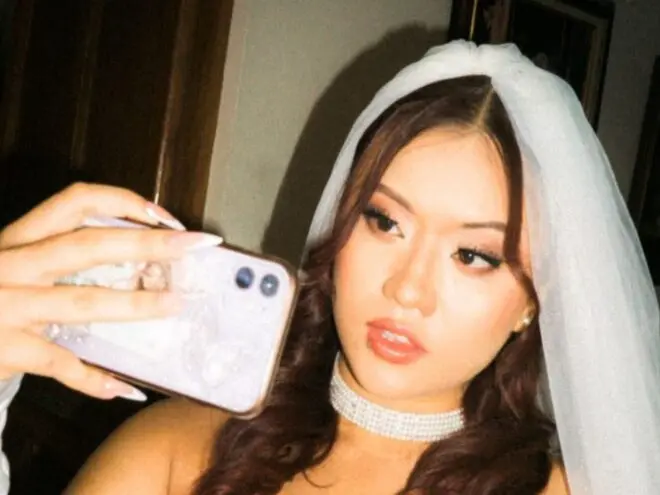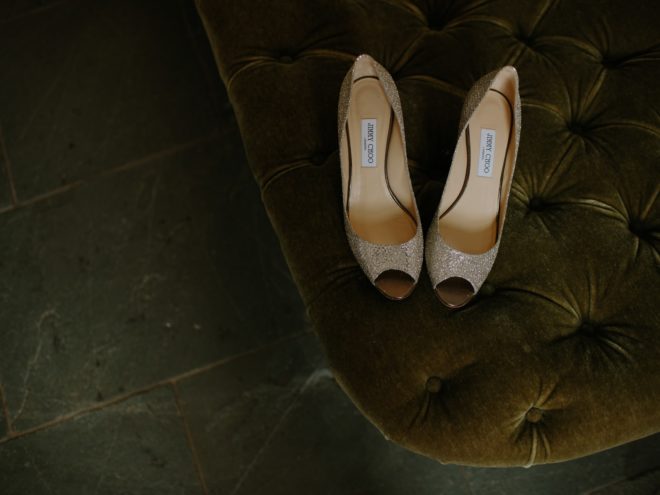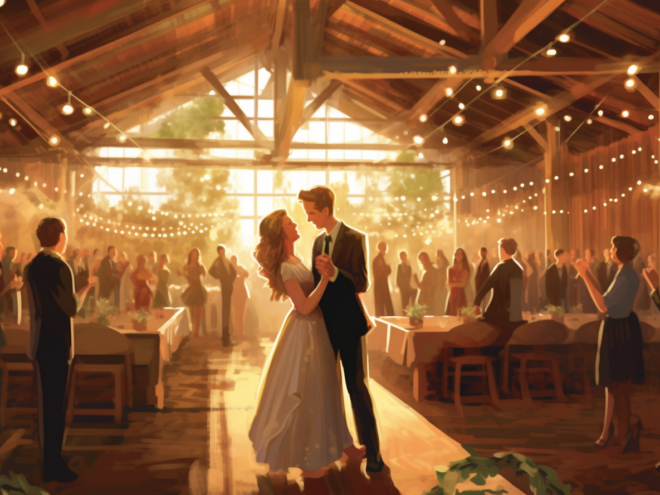Wedding Style • 12/09/2023
Can You Wear Black to a Wedding? Modern Dress Codes

Revivalist is a reader-supported endeavor and our posts may contain affiliate links. When you buy through links on our site, we may earn an affiliate commission.
Black, once considered taboo or a sign of mourning, has steadily made its way into the world of wedding fashion, offering elegance and versatility. This shift in perception doesn’t mean every ceremony is ripe for a black outfit, but it is certainly more acceptable now. It’s important to consider the type of nuptials, cultural norms, and the bride and groom’s preferences. Can you wear black to a wedding? Here’s what to know.
Historical Context
Historically, wearing black to joyous occasions like weddings was inauspicious. In Western culture, black was — and often still is — associated with mourning and funerals. Thus, donning black signifies disrespect or ill wishes to the newlyweds.
Conversely, brides wore white as a symbol of purity and new beginnings. It used to be just as offensive to wear white to a wedding as it is to wear black because it meant you were “stealing” the bride’s big moment.
Modern Interpretations
The 21st century has seen a marked shift from these traditional beliefs. Fashion and cultural norms have become more fluid, allowing for relaxed dress codes. Black is now recognized for its timeless elegance and versatility. A sleek black dress or suit can appear incredibly sophisticated and appropriate for evening or formal weddings. Moreover, black-tie events often require dark suits or tuxedos, making the color acceptable and expected.
Cultural and Personal Sensitivities
While the fashion world has warmed up to the idea of black at weddings, it’s crucial to consider cultural and personal nuances. In some cultures, colors have specific symbolic meanings that might differ from Western perspectives. Before choosing a black outfit, it’s wise to be aware of any sensitivities related to the bride, groom or the wedding’s location.
Striking the Right Balance
It’s essential to strike a balance if you choose to wear black. Pairing a black outfit with colorful accessories can lighten the overall look and infuse a touch of festivity. Men might choose a vibrant tie or pocket square, while women can opt for statement jewelry or shoes.
Wedding Colors Across the Centuries
Weddings are significant events, often associated with colors that bear spiritual and cultural meanings. White wasn’t even the standard color for wedding dresses until the 19th century.
Over the years, fashion trends and advances in textile production changed the color preferences of the bride and the wedding guests. Here’s a quick look at wedding colors throughout the centuries.
Ancient Civilizations
In Ancient Greece, women donned bright yellow or red veils to shield themselves from evil spirits. Meanwhile, in Ancient Rome, brides chose long white tunics symbolizing purity and happiness, while grooms typically wore togas.
Medieval Era
Blue emerged as a favorite among many brides during the Medieval period, as it was the color of purity and represented the heavens. This is how the Western wedding tradition of “something blue” started. However, due to economic constraints, many brides wore their finest dresses, regardless of the color.
16th to 18th Centuries
Brides continued the tradition of wearing their best dresses if economic circumstances didn’t allow for a new purchase. Silver gowns gained traction among European royalty and upper classes since the technology needed to create silver threads was already available. By the 18th century, fashion had shifted slightly, favoring pale colors such as blue, lavender and pink.
19th Century
The 19th century witnessed a pivotal turn in bridal fashion when Queen Victoria married Prince Albert in 1840. She chose a white gown, making a lasting impact on Western bridal trends. From that point, white became the bride’s symbolic color of purity and innocence. Nonetheless, wearing their best dress remained the go-to option for many who couldn’t splurge on a new outfit.
20th Century
In the early 20th century, brides predominantly chose white and ivory for their big day. However, during wartime, they often opted for practical suits or simpler dresses, which they could repurpose later.
The period following World War II saw a resurgence of grandeur in wedding fashion. Brides gravitated toward voluminous, white ball gowns, a stark contrast to the subdued styles during the war years.
What, No Black?
Until the 20th century, wearing black to a wedding was frowned upon or impossible because black textile dyes only became commercially available in the 19th century. Even then, the only people who wore black clothes were those in mourning — the same people who were socially prohibited from attending joyous celebrations out of respect for the departed. Hence, seeing a wedding guest wearing black was highly unusual.
The Asian Perspective
In Asia, color still plays a massive role in many aspects of the culture and belief system. It’s still odd to wear a green hat or an all-white outfit in China, and it’s still unusual, if not offensive, to write someone’s name in red in Korea.
Can you wear black to a wedding in Asia? Color is a big deal for an event as significant as a wedding. Unless you want elderly aunties and grandmas wringing their hands, it’s best to avoid wearing black or all white unless the wedding invitation or the bride and groom say it’s OK.
East Asia
Chinese weddings predominantly feature red, symbolizing luck, happiness and prosperity. Brides often don a red Qipao or Cheongsam. Gold accents, symbolizing wealth and fortune, usually accompany the dominant red in decorations and accessories. The color is reserved for the bride and groom, and guests also avoid black and white.
Korean brides typically wear Hanbok in hues of red and blue for their weddings. These colors represent the balance of the universe. Furthermore, yellow and green shades in Hanbok represent harmony with nature.
In Japan, brides wear a white kimono, known as “Shiromuku,” during Shinto weddings. This color embodies purity and maidenhood. Post-ceremony, many brides transition into a red kimono, symbolizing happiness and good luck.
Southeast Asia
Gold is central in many Indonesian weddings, especially in Javanese culture, denoting wealth and luxury. The color green, representing nature and life, is prevalent in Minangkabau weddings. Red also makes a notable appearance, embodying bravery and spiritual strength.
Vietnamese brides often opt for the traditional Ao Dai in red, as it brings forth luck and prosperity. However, pink, representing love and happiness, has become popular among Vietnamese brides.
Can You Wear Black to a Wedding? When in Doubt, Ask
Even in Asia, where people follow old traditions, Western-style weddings are widely practiced, so don’t let ancient rituals stop you from wearing black. Wedding attire is vast and varied, and what was once considered taboo can now be seen as trendy.
So, can you wear black to a wedding? Although it’s more acceptable today than in the past, it’s essential to approach the choice with sensitivity and awareness. Ask the couple if wearing black is OK. After all, a wedding is a celebration of love and unity — the ultimate goal should be to honor and respect their special day.
Subscribe to Our Weekly Newsletter
We would love to connect deeper with you!


